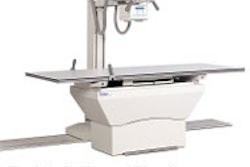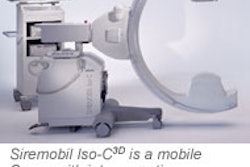A large-scale study on subarachnoid hemorrhage (SAH) outcomes has found that hospitals that treat more SAH patients save more of them as well. The phenomenon is also seen with other diagnoses, but this time some credit is extended to interventional neuroradiologists and their improved imaging equipment.
Not that anyone can say exactly why high-volume centers are more successful. The data used in the latest study -- covering more than 16,000 SAH admissions in 18 states -- doesn’t offer enough detail to draw firm conclusions on causality (Journal of Neurosurgery, November 2003, Vol. 99:5, pp. 810-817).
But among the multiplicity of potential contributing factors cited by the researchers, the availability of endovascular aneurysm treatments stands out. And in an interview with AuntMinnie.com, lead author Dr. DeWitte Cross also emphasized the potential importance of biplane versus single-plane angiographic equipment.
A number of studies have found that higher volume equals lower mortality for a variety of procedures, including aneurysm clip placement, coronary angioplasty, pancreatic resection, joint replacement surgery, and pneumonectomy. However, the 40% difference in SAH mortality is one of the largest gaps yet identified, according to the authors.
"The difference in mortality rates among the hospital groups in this analysis is probably due to differences in the care rendered," wrote the multidisciplinary team led by Cross, who is director of interventional neuroradiology at Washington University in St. Louis.
"The variance in mortality rates may relate to the training, skill, and experience of the people involved in the care of these patients, and it probably also relates to how the hospitals are equipped," the authors wrote.
For all types of medical centers, in-hospital mortality from SAH in the U.S. has dropped from the 50% death rate found in 1966 to the 33% overall rate seen in this latest study.
The authors listed several advances that have occurred over the past 37 years, including endovascular treatments, microsurgical procedures, more-aggressive therapy for cerebral vasospasm, and the development of specialized neurology ICUs and professional staff.
As for the lingering mortality gap between centers, one contributing factor the authors were able to quantify was that high-volume centers had a 33% higher rate of treating patients with craniotomy and clip occlusion or endovascular embolization of ruptured cerebral aneurysms.
"The higher rate of definitive treatment found at high SAH case-volume hospitals was striking," wrote the authors. "Not only is definitive treatment linked to reduced rates of aneurysm rebleeding, but the higher treatment rate indicates that high SAH case-volume hospitals are more likely to use their larger array of techniques, skills, and equipment when treating patients with this disorder."
Based on his own experience with endovascular placement of aneurysm coils, Cross cited the availability of biplane interventional imaging as a boon.
"It’s nice to have two different projections to go back and forth to see the relationship of the catheter to the aneurysm, the coil to the aneurysm, and the parent artery," Cross said. "Having quality images, and quality road maps, is a big help."
Cross noted that his facility also has a higher-than-average rate of definitive treatment, around 75%, perhaps due in part to an unusually cooperative relationship between staff neurosurgeons and neurointerventionalists.
"I think it’s fair to say that some aneurysms are better treated endovascularly because of location and lower complication rates, and others are better treated surgically because of better durability and accessibility to a craniotomy approach," Cross said. "I think here we coil about 50% and clip about 50%."
An accompanying Journal of Neurosurgery editorial hinted at the turf dispute that likely exists at other facilities, noting the Washington University group’s frequent references to endovascular treatment options.
"Although they are careful not to state this in their conclusion, the implication is that the availability of endovascular therapy at higher-volume hospitals was partially responsible for the better outcomes in terms of mortality rates at those institutions," wrote Dr. Roberto Heros, president of the American Association of Neurological Surgeons of Rolling Meadows, IL.
"That may or may not be the case," Heros continued, "but I do not believe that these data allow any conclusions in this respect, given the lack of information in this study about the mortality rates accompanying endovascular treatment compared with open surgical or no treatment in the hospitals involved."
Heros also opined that in the absence of study data on the severity of the initial hemorrhage or initial neurological condition -- "the most important determinant of outcome in patients with SAH" -- he didn’t think that a call to transfer patients to high-volume centers was warranted.
Cross, on the other hand, thinks his group’s findings support a move toward "centralization of care."
"I think it’s better for patients to be at a place where their problem is dealt with on a more frequent basis," he said. And, he noted, economic factors might already be precipitating that shift.
"Around here, because of the rapid increase in neurosurgical malpractice rates, there are several groups around town in the community hospitals that have decided that they no longer want to take care of subarachnoid hemorrhage patients and are sending them to the larger academic centers."
By Tracie L. ThompsonAuntMinnie.com staff writer
December 11, 2003
Related Reading
CTA, MRA advance aneurysm diagnosis and follow-up, April 30, 2003
3-D power Doppler challenges standard aneurysm visualization, April 2, 2003
Pseudoaneurysm size affects success of thrombin injection with US, April 1, 2003
Copyright © 2003 AuntMinnie.com



















